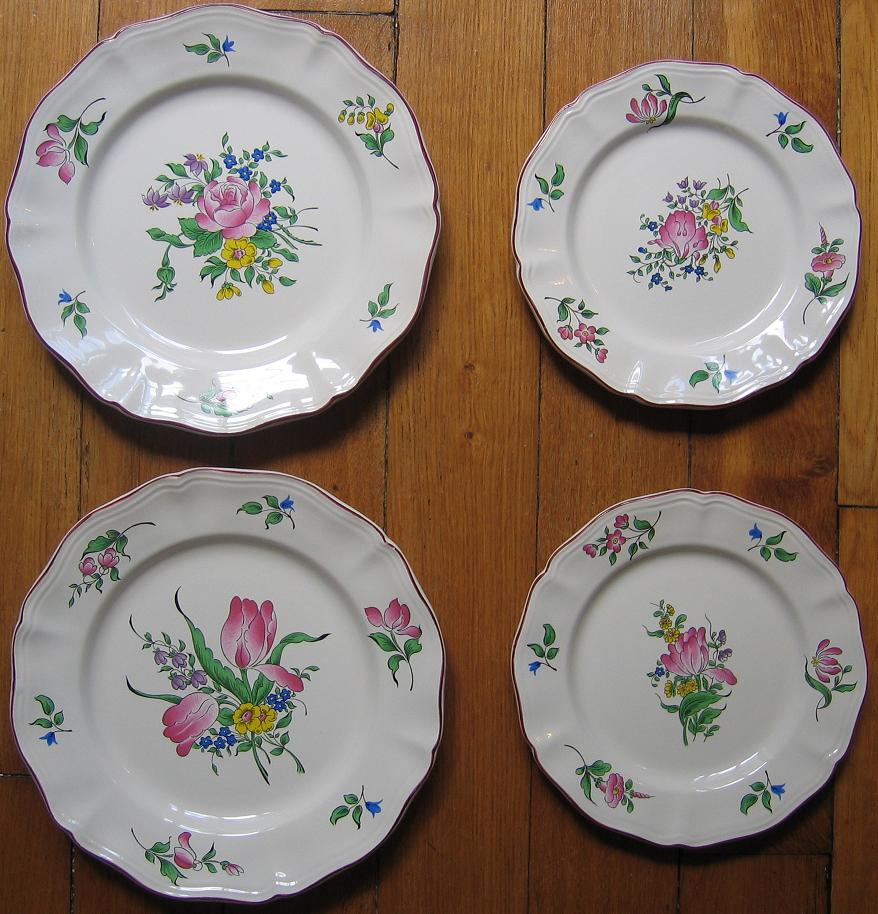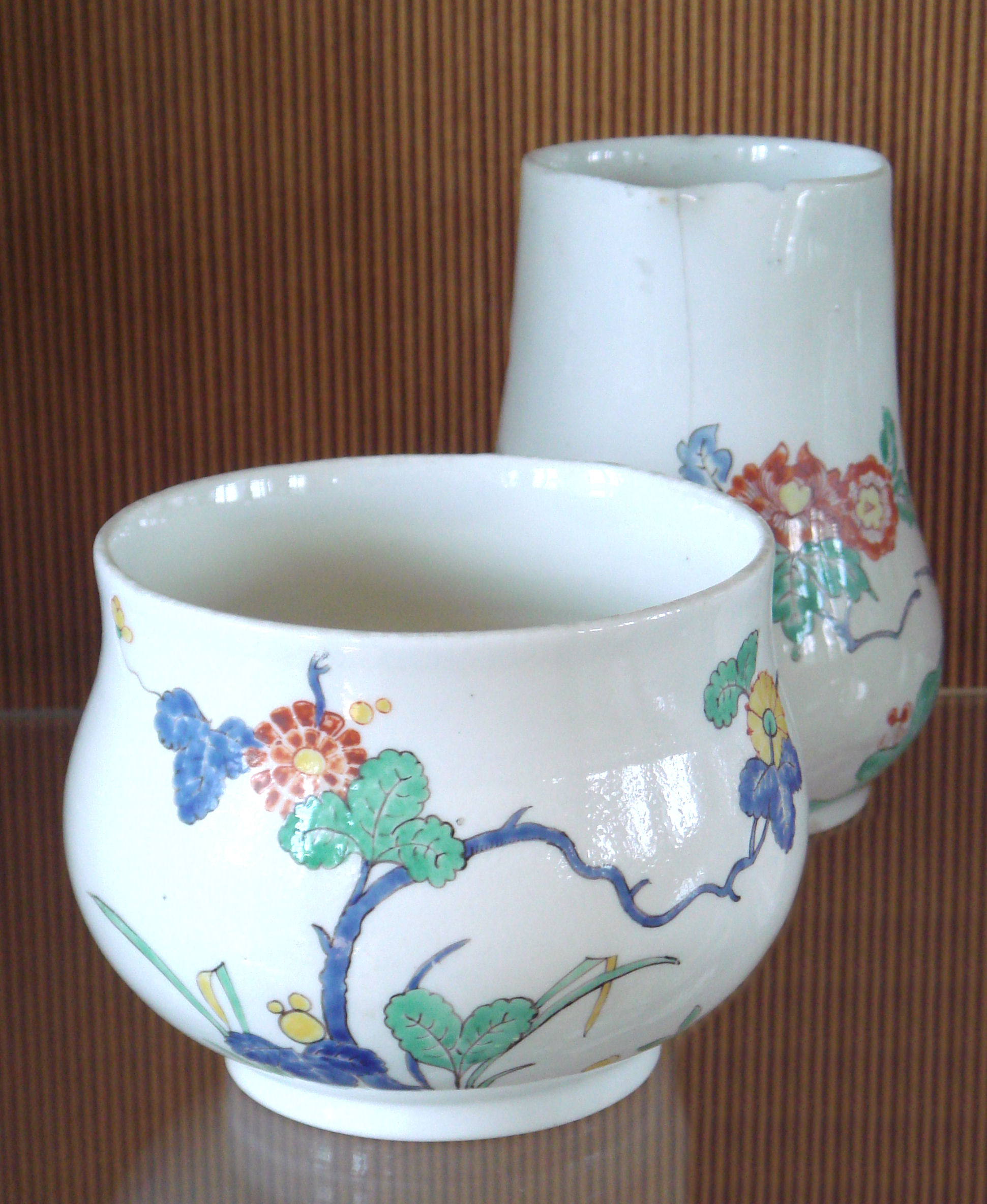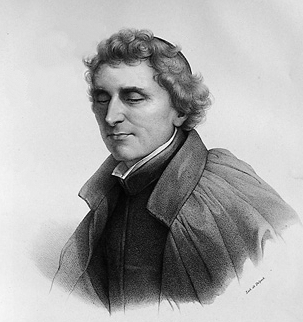|
Chantilly Porcelain
Chantilly porcelain is French soft-paste porcelain produced between 1730 and 1800 by the manufactory of Chantilly in Oise, France. The wares are usually divided into three periods, 1730-51, 1751-1760, and a gradual decline from 1760 to 1800. The factory made table and tea wares, small vases, and some figures, these all of Orientals. Foundation Outbuildings were purchased in March 1730 on the banks of the small river Nonette near the extensive park of his château de Chantilly by Louis Henri de Bourbon, prince de Condé, the prince of the blood exiled from Court, who founded the factory. At this period, the capital investment required for establishing a porcelain manufactory was so extensive that a royal or aristocratic patron was essential; only in Britain was early porcelain manufacture capitalized by the merchant class. The elite wares of Chantilly were intended to compete with Saint-Cloud porcelain, a pioneer among French soft-paste porcelain manufactures, and other smal ... [...More Info...] [...Related Items...] OR: [Wikipedia] [Google] [Baidu] |
Chantilly Bowl Intermediate Period 1750 1760
Chantilly may refer to: Places France *Chantilly, Oise, a city located in the Oise department **US Chantilly, a football club *Château de Chantilly, a historic château located in the town of Chantilly United States * Chantilly, Missouri, an unincorporated community * Chantilly (Charlotte neighborhood), a neighborhood in Charlotte, North Carolina *Chantilly, Virginia, an unincorporated area located in Fairfax County, Virginia **Chantilly High School, a public high school located in Chantilly, Virginia and the Fairfax County Public Schools system *Chantilly (Montross, Virginia), a historic archaeological site near Montross, Virginia Other *Battle of Chantilly, a battle in the American Civil War in Chantilly, Virginia *Chantilly Codex, a late medieval manuscript, and the primary source of music in the ''ars subtilior'' style *Chantilly Conferences, during World War I *Chantilly cream, a synonym for whipped cream *Chantilly lace, a handmade bobbin lace from Chantilly, Oi ... [...More Info...] [...Related Items...] OR: [Wikipedia] [Google] [Baidu] |
Kakiemon
is a style of Japanese porcelain, with overglaze decoration called "enameled" ceramics. It was originally produced at the factories around Arita, in Japan's Hizen province (today, Saga Prefecture) from the Edo period's mid-17th century onwards. The style shares much in common with the Chinese "Famille Verte" style. The quality of its decoration was highly prized in the West and widely imitated by major European porcelain manufacturers during the Rococo period. Kakiemon is a term that generates some confusion, being the name of a family, one or more kilns, and a brightly-coloured overglaze style broadly imitating Chinese wares. The style originated with the family, whose kilns were the main producers of it, but other kilns also made it, and the Kakiemon kilns made other styles. Both the palette and style, and very probably the kiln, were in place by the 1680s. The style is a sub-type of what is called in the West Imari ware, the overglaze coloured variety of the broader grouping ... [...More Info...] [...Related Items...] OR: [Wikipedia] [Google] [Baidu] |
Lead Glaze
Lead-glazed earthenware is one of the traditional types of earthenware with a ceramic glaze, which coats the ceramic biscuit body and renders it impervious to liquids, as terracotta itself is not. Plain lead glaze is shiny and transparent after firing. Coloured lead glazes are shiny and either translucent or opaque after firing. Three other traditional techniques are tin-glazed (in fact this is lead glaze with a small amount of tin added), which coats the ware with an opaque white glaze suited for overglaze brush-painted colored enamel designs; salt glaze pottery, also often stoneware; and the feldspathic glazes of Asian porcelain. Modern materials technology has invented new vitreous glazes that do not fall into these traditional categories. In lead glazes, tints provided by impurities render greenish to brownish casts, with aesthetic possibilities that are not easily controlled in the kiln. The Romans used lead glazes for high-quality oil lamps and drinking cups. At the same t ... [...More Info...] [...Related Items...] OR: [Wikipedia] [Google] [Baidu] |
Faience
Faience or faïence (; ) is the general English language term for fine tin-glazed pottery. The invention of a white pottery glaze suitable for painted decoration, by the addition of an oxide of tin to the slip of a lead glaze, was a major advance in the history of pottery. The invention seems to have been made in Iran or the Middle East before the ninth century. A kiln capable of producing temperatures exceeding was required to achieve this result, the result of millennia of refined pottery-making traditions. The term is now used for a wide variety of pottery from several parts of the world, including many types of European painted wares, often produced as cheaper versions of porcelain styles. English generally uses various other terms for well-known sub-types of faience. Italian tin-glazed earthenware, at least the early forms, is called maiolica in English, Dutch wares are called Delftware, and their English equivalents English delftware, leaving "faience" as the normal te ... [...More Info...] [...Related Items...] OR: [Wikipedia] [Google] [Baidu] |
Tin-glaze
Tin-glazing is the process of giving tin-glazed pottery items a ceramic glaze that is white, glossy and opaque, which is normally applied to red or buff earthenware. Tin-glaze is plain lead glaze with a small amount of tin oxide added.Caiger-Smith, Alan, ''Tin-Glaze Pottery in Europe and the Islamic World: The Tradition of 1000 Years in Maiolica, Faience and Delftware'', London, Faber and Faber, 1973 The opacity and whiteness of tin glaze encourage its frequent decoration. Historically this has mostly been done before the single firing, when the colours blend into the glaze, but since the 17th century also using overglaze enamels, with a light second firing, allowing a wider range of colours. Majolica, maiolica, delftware and faience are among the terms used for common types of tin-glazed pottery. An alternative is lead-glazing, where the basic glaze is transparent; some types of pottery use both. However, when pieces are glazed only with lead, the glaze becomes fluid during fi ... [...More Info...] [...Related Items...] OR: [Wikipedia] [Google] [Baidu] |
Ciquaire Cirou
Ciquaire Cirou (c. 1700-1751) was a French industrialist and porcelain manufacturer. He was originally a member of the Saint-Cloud manufactory, where he was a painter, specializing in soft-paste porcelain. By a letter dated 5 October 1735, Louis XV (reg 1715-74) allowed Ciquaire Cirou to make porcelain "in imitation of Japanese porcelain" for 20 years. The Chantilly manufactory itself had already been established since c.1725 however. Ciquaire Cirou thus became the director of the Chantilly manufactory until his death, under the protection of Louis Henri, Duke of Bourbon. Through his tenure, the style of the Chantilly manufactory, described as the "First period" (1725-1751), almost entirely focused on imitations of Chinese and Japanese wares, such as the ''Kakiemon'' style. See also * French porcelain French porcelain has a history spanning a period from the 17th century to the present. The French were heavily involved in the early European efforts to discover the secrets of m ... [...More Info...] [...Related Items...] OR: [Wikipedia] [Google] [Baidu] |
Louis XV Of France
Louis XV (15 February 1710 – 10 May 1774), known as Louis the Beloved (french: le Bien-Aimé), was King of France from 1 September 1715 until his death in 1774. He succeeded his great-grandfather Louis XIV at the age of five. Until he reached maturity (then defined as his 13th birthday) on 15 February 1723, the kingdom was ruled by his grand-uncle Philippe II, Duke of Orléans, as Regent of France. Cardinal Fleury was chief minister from 1726 until his death in 1743, at which time the king took sole control of the kingdom. His reign of almost 59 years (from 1715 to 1774) was the second longest in the history of France, exceeded only by his predecessor, Louis XIV, who had ruled for 72 years (from 1643 to 1715). In 1748, Louis returned the Austrian Netherlands, won at the Battle of Fontenoy of 1745. He ceded New France in North America to Great Britain and Spain at the conclusion of the disastrous Seven Years' War in 1763. He incorporated the territories of the Duchy of Lorra ... [...More Info...] [...Related Items...] OR: [Wikipedia] [Google] [Baidu] |
William Chaffers
William Chaffers (28 September 1811 – 12 April 1892) was an English antiquary and writer of reference works on hallmarks, and marks on ceramics. His ''Marks and Monograms on Pottery and Porcelain'', first published in 1863, has appeared in many later editions. Life Chaffers was the son of William Chaffers and wife Sarah, and was born in Watling Street, London, in 1811; he was descended from a brother of Richard Chaffers (1731–1765), a manufacturer of Liverpool porcelain. He was educated at Margate and at Merchant Taylors' School, where he was entered in 1824. He was attracted to antiquarian studies while a clerk in the city of London, by the discovery of Roman and medieval antiquities in the foundations of the Royal Exchange during 1838–9. At the same time he began to concentrate attention upon the study of gold and silver plate and ceramics, especially in regard to the official and other marks by which dates and places of fabrication can be distinguished. In 1863 Chaffe ... [...More Info...] [...Related Items...] OR: [Wikipedia] [Google] [Baidu] |
Chandelier
A chandelier (; also known as girandole, candelabra lamp, or least commonly suspended lights) is a branched ornamental light fixture designed to be mounted on ceilings or walls. Chandeliers are often ornate, and normally use incandescent light bulbs, though some modern designs also use fluorescent lamps and recently LEDs. Classic chandeliers have arrays of hanging crystal prisms to illuminate a room with refracted light, while contemporary chandeliers assume a more minimalist design that does not contain prisms and illuminate a room with direct light from the lamps, sometimes also equipped with translucent glass covering each lamp. Modern chandeliers have a more modernized design that uses LEDs, and combines the elements of both classic and contemporary designs; some are also equipped with refractive crystal prisms or small mirrors. Chandeliers are distinct from pendant lights, as they usually consist of multiple lamps and hang in branched frames, whereas pendant lights h ... [...More Info...] [...Related Items...] OR: [Wikipedia] [Google] [Baidu] |
Bourdaloue
Louis Bourdaloue (20 August 1632 – 13 May 1704) was a French Jesuit and preacher. Biography He was born in Bourges. At the age of sixteen he entered the Society of Jesus, and was appointed successively professor of rhetoric, philosophy and moral theology, in various Jesuit colleges. His success as a preacher in the provinces led his superiors to call him to Paris in 1669 to occupy for a year the pulpit of the church of St. Louis.Now called ''Eglise St.-Paul-St-Louis'', Metro St. Paul. To the left as one enters the church there is a large plaque dedicated to Bourdaloue on a pillar in front of the church. Owing to his eloquence he was speedily ranked in popular estimation with Corneille, Racine, and the other leading figures during the height of Louis XIV's reign. He preached at the court of Versailles during the Advent of 1670 and the Lent of 1672, and was subsequently called again to deliver the Lenten course of sermons in 1674, 1675, 1680 and 1682, and the Advent serm ... [...More Info...] [...Related Items...] OR: [Wikipedia] [Google] [Baidu] |
Tureen
A tureen is a serving dish for foods such as soups or stews, often shaped as a broad, deep, oval vessel with fixed handles and a low domed cover with a knob or handle. Over the centuries, tureens have appeared in many different forms: round, rectangular, or made into fanciful shapes such as animals or wildfowl. Tureens may be ceramic—either the glazed earthenware called faience, or porcelain—or silver, and customarily they stand on an undertray or platter made ''en suite''. Etymology The tureen as a piece of tableware called a ''pot à oille''—a Catalan-Provençal soup—came into use in late seventeenth-century France. Alternative explanations for the etymology are that it is related to the earlier word ''terrine'', a borrowing from the French for 'a large, circular, earthenware dish'''The Concise Oxford Dictionary of Current English'' (Oxford 1995: 9th edition; ed. Thompson), p. 1503 or that it is named to honour the French military hero Marshal Turenne ... [...More Info...] [...Related Items...] OR: [Wikipedia] [Google] [Baidu] |
Rococo
Rococo (, also ), less commonly Roccoco or Late Baroque, is an exceptionally ornamental and theatrical style of architecture, art and decoration which combines asymmetry, scrolling curves, gilding, white and pastel colours, sculpted moulding, and ''trompe-l'œil'' frescoes to create surprise and the illusion of motion and drama. It is often described as the final expression of the Baroque movement. The Rococo style began in France in the 1730s as a reaction against the more formal and geometric Louis XIV style. It was known as the "style Rocaille", or "Rocaille style". It soon spread to other parts of Europe, particularly northern Italy, Austria, southern Germany, Central Europe and Russia. It also came to influence the other arts, particularly sculpture, furniture, silverware, glassware, painting, music, and theatre. Although originally a secular style primarily used for interiors of private residences, the Rococo had a spiritual aspect to it which led to its widespread use in ... [...More Info...] [...Related Items...] OR: [Wikipedia] [Google] [Baidu] |


.jpg)




